Australian holidaymakers dreaming of a scenic getaway can find hidden treasures in their own backyard – if they know where to look.
And with these spectacular caves and thermal pool tucked away in the heart of a eucalyptus forest, you could be forgiven for missing them at first glance.
In the Snowy Mountains, the south-western alpine region of New South Wales, lies the Yarrangobilly caves – a sprawling system of astonishing rock tunnels that formed about 440 million years ago.
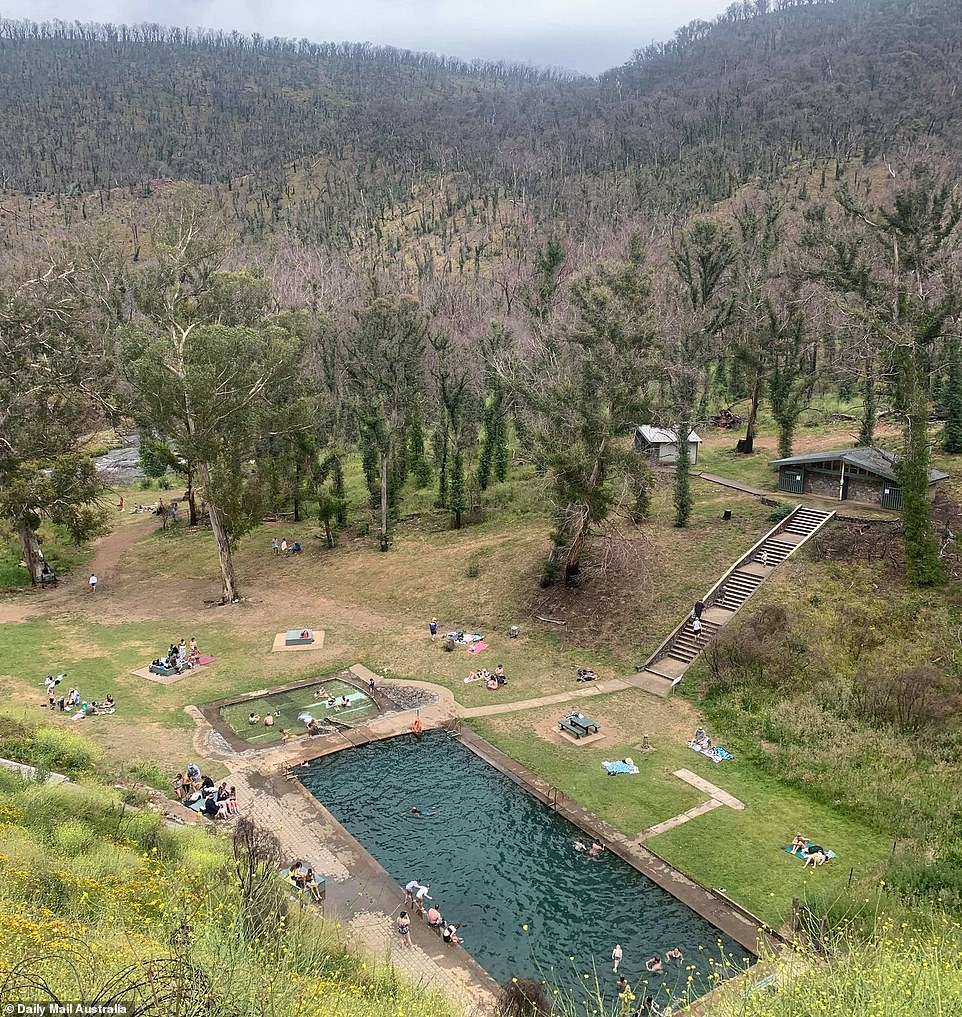
The Yarrangobilly Caves and thermal pool are tucked away in the northern part of Mount Kosciuszko National Park, in New South Wales Snowy Mountains region
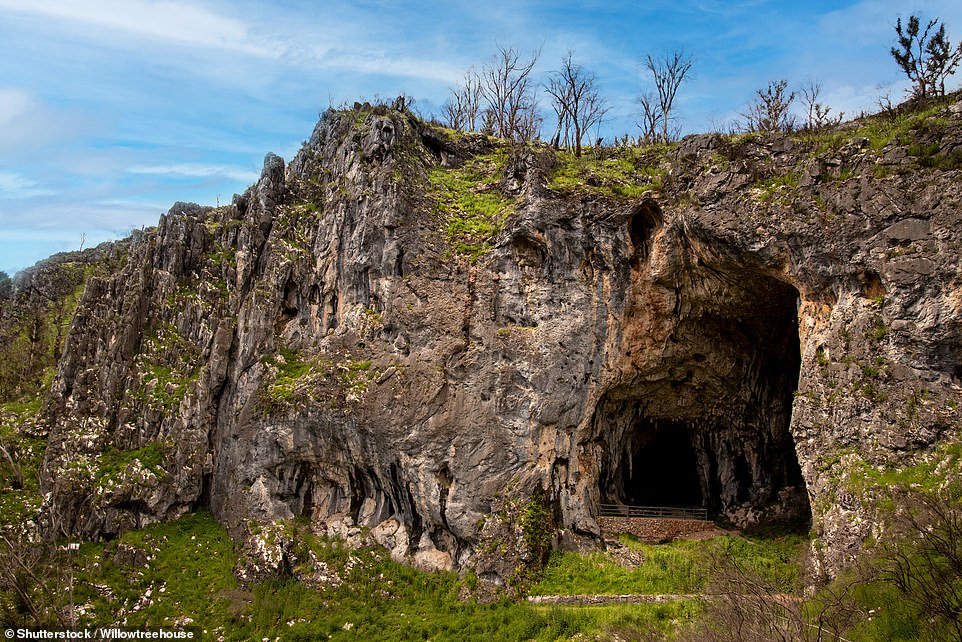
The Yarrangobilly Caves system is a collection of limestone caves (one pictured) located in a 12km-long karst region
Nestled in the northern end of Kosciousko National Park, the six limestone caves – South Glory, Jilabenan, Castle, Harrie Wood, and North Glory- feature a collection of stunning formations throughout their lofty chambers.
Stalagmites, stalactites, shawls and cave corals grow wildly from the rock walls, created over millions of years from a chemical reaction between rain water and limestone.
Visitors can take a self-guided tour of South Glory, the largest cave, or a guided tour through the others, with the range of sites catering to all age groups.
But don’t forget to bring your swimmers – after a cave tour or bushwalk, tourists can take a dip in the spring-fed thermal pool, which stays a constant 27 degrees year-round.
A short (but steep) walk away down a winding track will lead you from the caves to the natural pool that basks in a valley clearing, with panoramic views of the unbridled Australian bush.
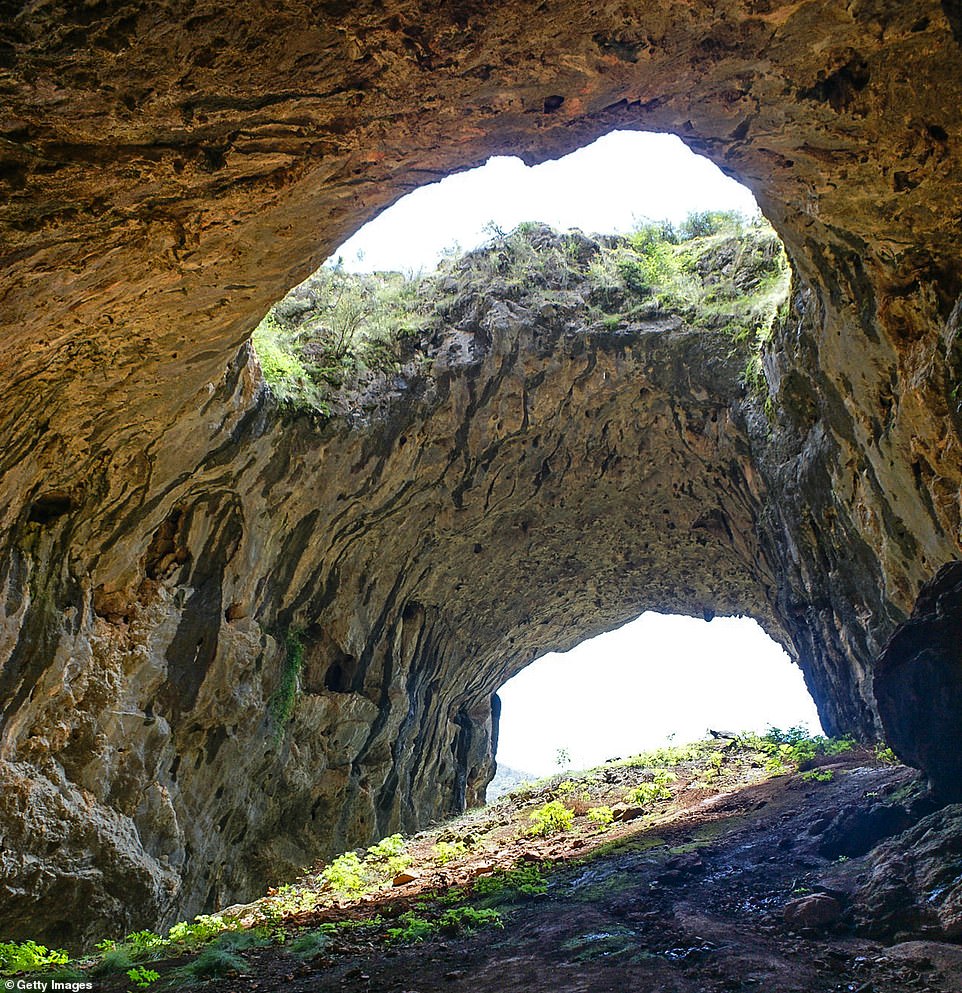
The caves formed about 440 million years ago from a chemical reaction between rain water and the lime stone. Pictured: A sky light at the entrance of the South Glory Cave

Stalagmites, stalactites, shawls and cave corals grow wildly from the rock walls. Pictured: the entrance into the South Glory cave
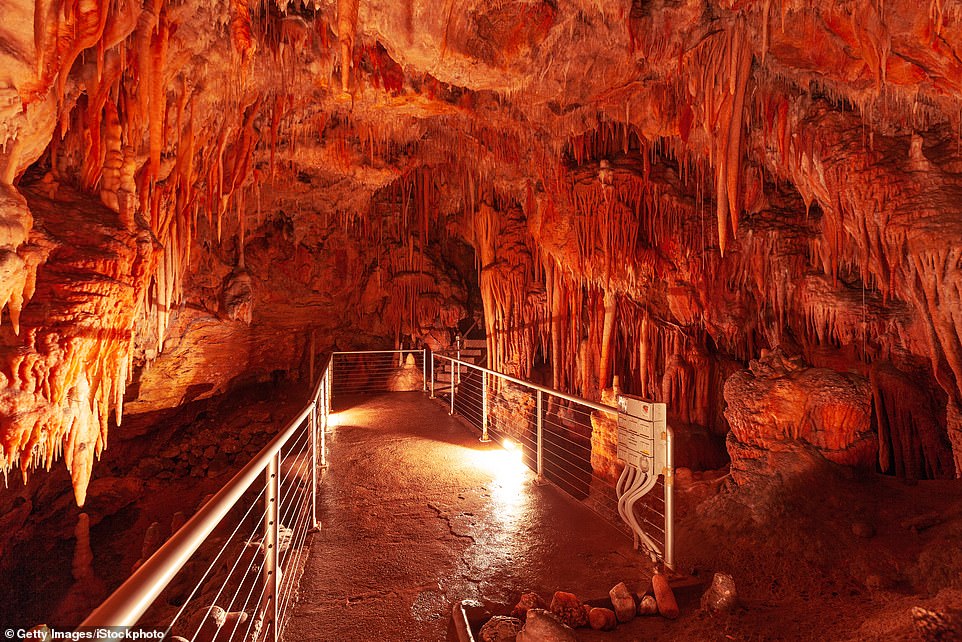
The range of caves offer different levels of accessibility, which allow all ages to visit the site. Pictured: Jillabenan cave in Kosciuszko National Park

After a bushwalk or cave tour, visitors can take a dip in the toasty thermal pool (pictured) or set up a picnic

The pool is nestled in a valley clearing, just a short walk away from the caves, and has panaromic views of the landscape
The water maintains its toasty temperature throughout the seasons because the pool is created from rain water that seeps through porous limestone rock down to 760 metres below the ground where it is heated then forced back up through cracks as a warm spring.
Although the landscape was ravaged by the 2019- 2020 horror bushfire season, the shrubbery has started to recover with vibrant green eucalyptus leaves climbing their way up charcoal-bitten tree trunks to regenerate.
The unusual sight makes for a breathtaking drive through the Snowy Mountains and the national park, which is home a population of wild brumbies that you just may see through the car window if you get lucky.
Just a five hour drive from Sydney, or three from Canberra, visiting the natural wonders can form a weekend trip away or be part of a longer holiday in the region.
Guests can stay on site at the Yarrangobilly Caves house, lodge-style accommodation with self-contained rooms and cottages, or in hotels in nearby hubs, such as Jindabyne, Cooma, or Talbingo.
Park entry fees apply to access the caves and the pool and it costs $4 per vehicle per day applies at Yarrangobilly Caves for motor vehicles without a Kosciuszko National Park day pass or NPWS All Parks annual pass.
Some caves, such as Jersey and North Glory, have been closed amid the Covid-19 pandemic due to health and safety requirements.
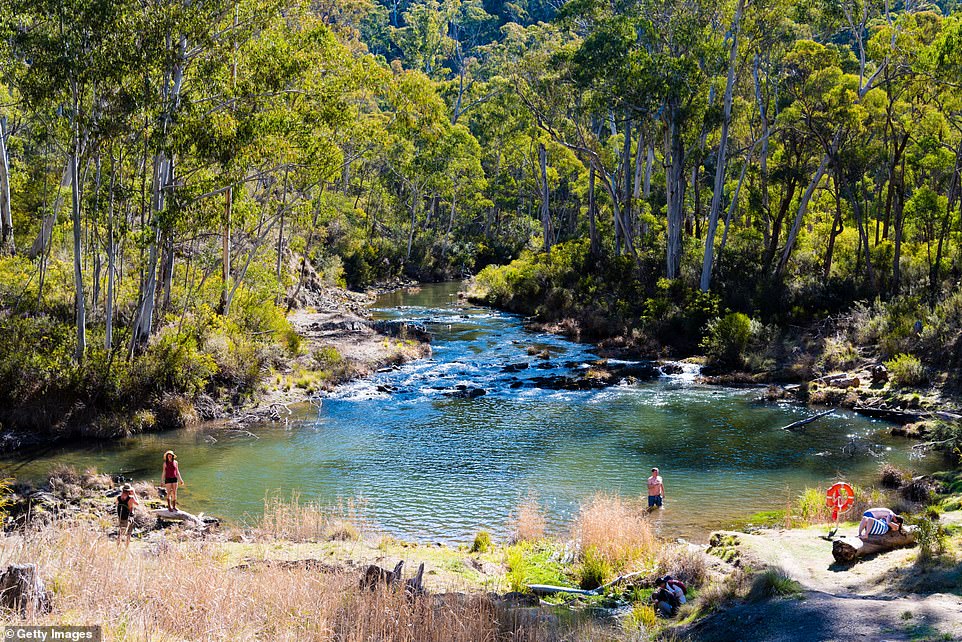
The river at Yarrangobilly Caves’ thermal pool is fed by a natural spring in Yarrangobilly area, Kosciuszko National Park

The thermal pool (pictured) sits in a valley and stays a cosy 27 degrees Celsius all year-round despite being in one of Australia’s alpine region

The pool maintains its toasty temperature throughout the seasons because it is created from rain water that seeps through porous limestone rock down to 760 metres below the ground surface then is forced back up as a warm spring
Source link : https://www.dailymail.co.uk/news/article-9260377/Spectacular-caves-thermal-pool-hidden-away-New-South-Wales.html












